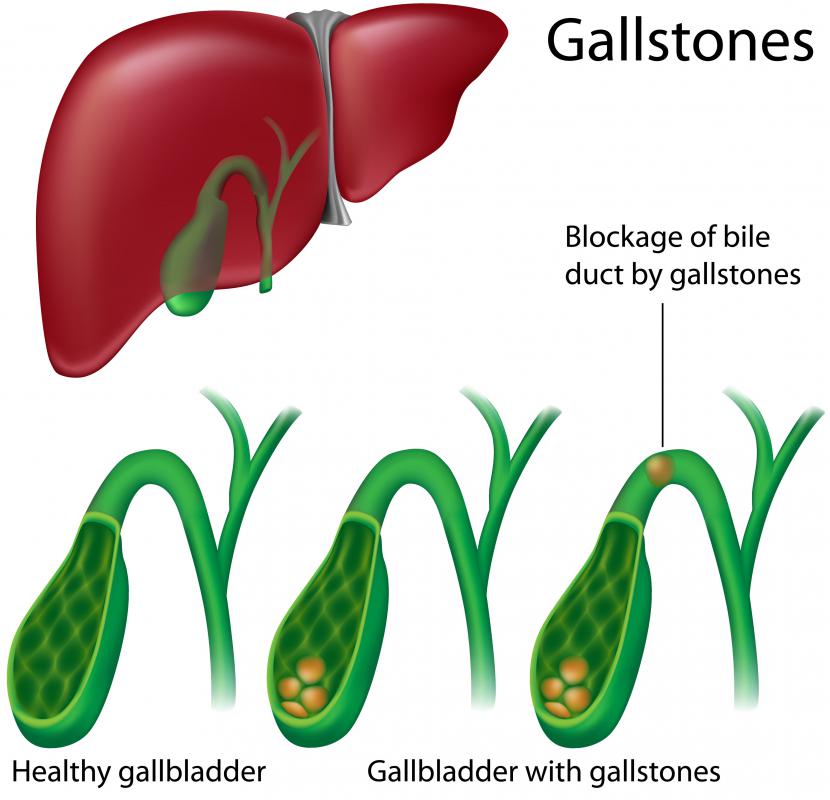At WiseGEEK, we're committed to delivering accurate, trustworthy information. Our expert-authored content is rigorously fact-checked and sourced from credible authorities. Discover how we uphold the highest standards in providing you with reliable knowledge.
What Is Laparoscopic Gallbladder Surgery?
Laparoscopic gallbladder surgery is a surgical technique used to remove a diseased gallbladder from the body. Unlike the traditional cholecystectomy, which involves a long incision to open up part of the abdominal cavity, the laparoscopic technique relies on several smaller incisions to access the organ for removal. This method allows for faster healing times and shorter hospital stays. The laparoscopic technique is now used for most gallbladder surgeries in the United States unless there are complicating factors.
Gallbladder removal is one of the most common types of surgery performed in the U.S. Surgeons generally perform this technique to help patients suffering from pain and other symptoms of gallstones. In most cases, removing the gallbladder will alleviate the patient’s symptoms and improve his or her quality of life.

Laparoscopic gallbladder surgery is now the preferred method of removing the organ because of the much faster recovery times. Patients can be back to work within seven to 10 days after a laparoscopic surgery versus from four to six weeks with the traditional method. This newer method also shortens the length of the hospital stay to less than a day for most patients. In some cases, the surgeon may know before the surgery begins that the more invasive surgery will be necessary. Other times, complications — such as widespread infection — may force what started off as laparoscopic surgery to become traditional surgery.

During laparoscopic gallbladder surgery, the patient is first put under with a general anesthetic. The surgeon then makes four small incisions in the patient’s abdomen. Using a tiny camera called a laparoscope, the surgeon examines the abdominal cavity and removes the gallbladder from the bile duct. In some procedures, the patient also may receive an X-ray known as a cholangiogram to help find and remove any additional gallstones from the body. A surgical drain may be inserted into some patients to help prevent infection.

The side effects from a laparoscopic gallbladder surgery may include pain, weakness, nausea and vomiting. The complication rate is similar to that of the traditional open surgery, with the most serious complication typically being a bile duct injury that may require an additional operation to make repairs. The patient is generally prescribed an antibiotic regime along with pain medication during recovery. Additional drugs may be given to help treat nausea and other side effects. The patient will usually have a few follow-up appointments with the surgeon to make sure the incisions are healing properly.
AS FEATURED ON:
AS FEATURED ON:













Discuss this Article
Post your comments